Mittwoch, 9. März 2011
The Quest M3
This is a repost of my description of the Quest M3 on toomuchcoffee.com.
I've had it a little over three months now and have done somewhere inbetween 75 to 150 roasts with it (I didn't log every roast in the beginning), so I feel quite confident handling it right now. First some pics:
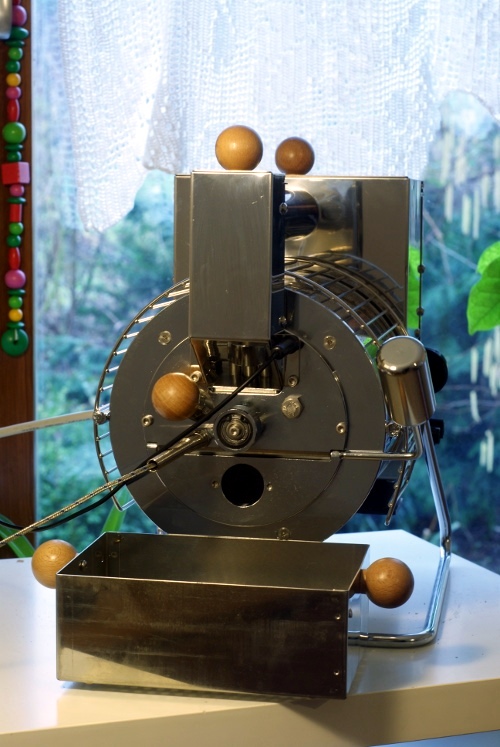
As you might have guessed if you saw previous pictures from me, it was not me who took them, but a good friend who's having as much fun taking pictures as I have roasting with the Quest. It's a nifty little machine, consists mainly of stainless steel and weighs about 12kg. It is rated with 1050W at 220V, and with our ~230V in the house it will happily draw 1200W if I'm not cautious with the knob. Specs also say it can handle 100g-300g loads of coffee, I've only tried 150g-250g for the moment and have been very successful with it. The controls are slightly steampunky:
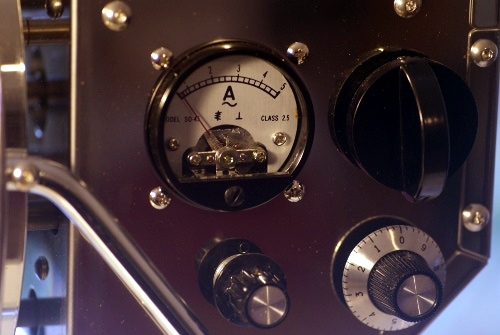
From top left to bottom right: Amperemeter, main switch (which happens to be a 45-minute kitchen clock), regulator for the power to the heating elements, regulator for the fan.
Be careful!
To make it crystal clear: this roaster has no safety device built in whatsoever besides the main switch, which can be set to 45 minutes max, and a circuit breaker. If you manually prolong the timer (by e.g. giving it another 45 minutes shortly before it runs out), you can easily set your house on fire or something like that. A thing to keep in mind while operating this^Wany roaster.
Even with a 250g load, my Quest seldomly needs more power than 1000W (which would be around the 4.33A mark on the meter). Throughout a 200g roast, the power it draws for me is around the 750-800W mark, so imagine what would happen if you give it the full 1200W and go away during the roast! Remember, no safety device?
The threads on home-barista were a tremendious help for me in quickly learning how to operate this roaster. I've had my share of undrinkable batches, but all in all I threw away less than 2 KG.
Here's a picture mid-roast (near the end):
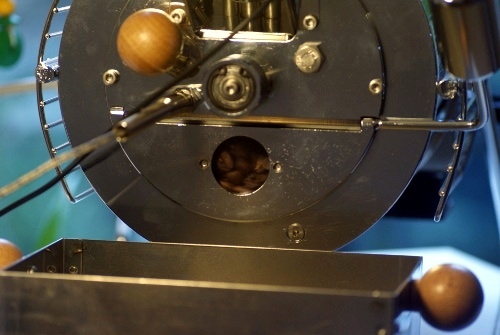
And dumping the beans:
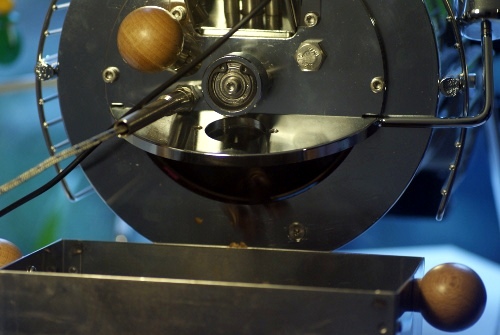
The result:

And the Quest's ingenious effortless cooling mechanism, which gets the temperature of the beans down to room-temperature within three minutes with 250g batches, even if they were into 2nd crack:
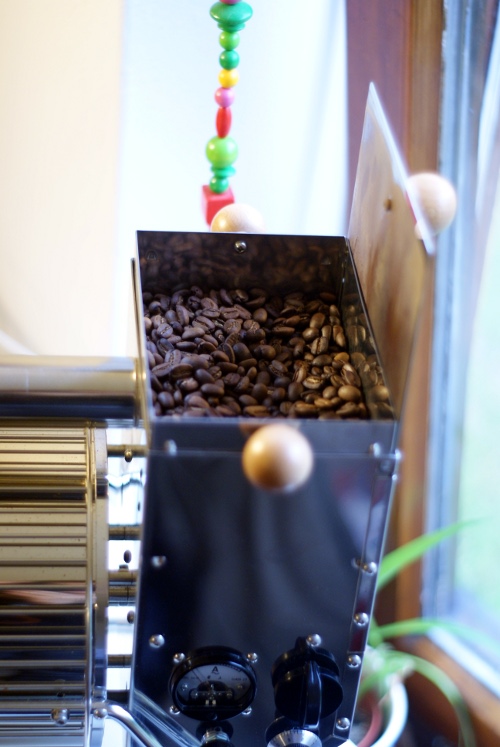
Does this read like an advertisement this far? Sorry, I just like my Quest! Might also have to do with myself having to justify the amount of cash sent over to Taiwan for it. But there are some downsides as well.
Cleaning
You need to clean it. This is how the space around the drum looks like after four roasts with less chaffy beans:
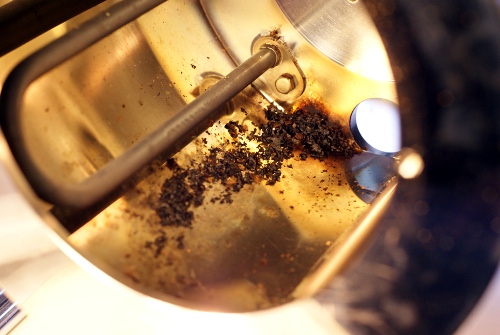
Guess how the burned chaff smells? I once forgot my allen key somewhere (all user-servicable parts are allen screws, and the Quest came delivered with a matching allen key for them) and did 15 roasts without cleaning this space. I'm quite happy that it didn't suddenly explode besides me! Surprised
Cleaning 2:
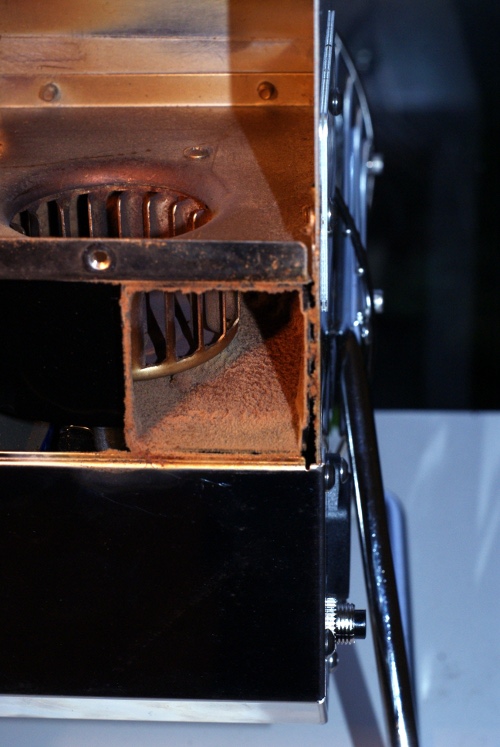
This was how the Quests exhaust looked after my first three months of using it. Maybe I should have cleaned this part earlier! To get to the exhaust, you need a slightly smaller allen key which didn't came with the Quest, so I suspect this is the not-user-serviceable area. You need to clean it every ~100 roasts, anyway, or it will gunk up.
Okay okay, this is probably not a downside at all - I guess you have to do regular maintenance on every other roaster too. I just didn't realize how much gunk would build up everywhere until I opened the case! With my stove-top roaster, the gunk would simply fly around the kitchen, ready for the vacuum cleaner to fetch.
Now for the worst part.
Electrics
If you're an electrician, you probably do not want to see this. I am not, so I don't really know, but it looks quite ... not so CE-worthy to me:
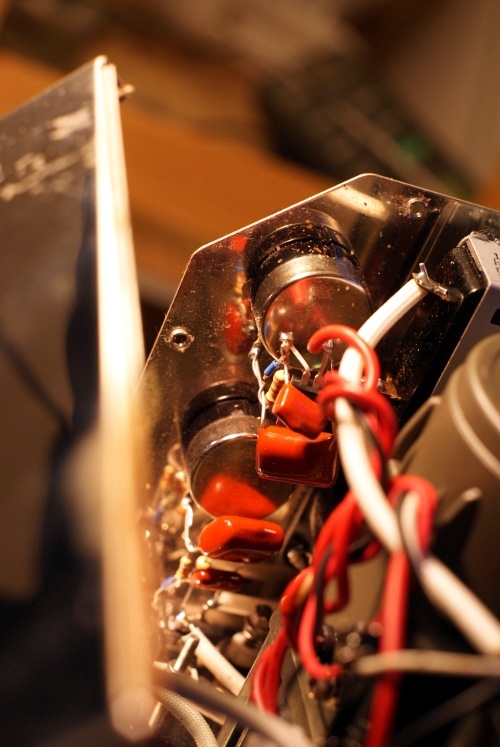
The round plates are the backsides of the two knobs.
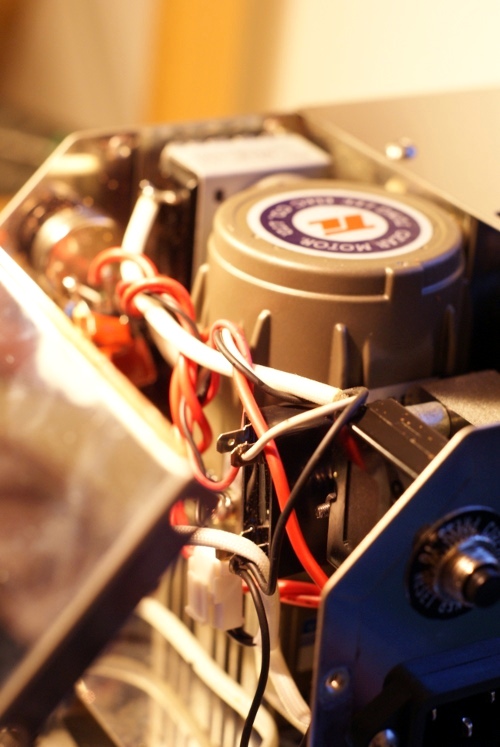
Though unisolated, the electricts are quite immovable within the case plus it's earthed, so I don't fear immediate death. I'm just quite happy that I didn't know this before the purchase, as it might have put me off! Comments from electronics-savy people would be very much appreciated here.
The Good
Enough of the bad and back to the good:
This is a Rwandan bean (don't know the specifics, but asides from the occasional potatoy-bag it's very smooth and tasty), roasted just until the end of 1st crack:

Thanks to the thermocouples supplied by the Quests' manufacturer and a not-so-cheapish datalogger and the Artisan project, I can record the profiles:
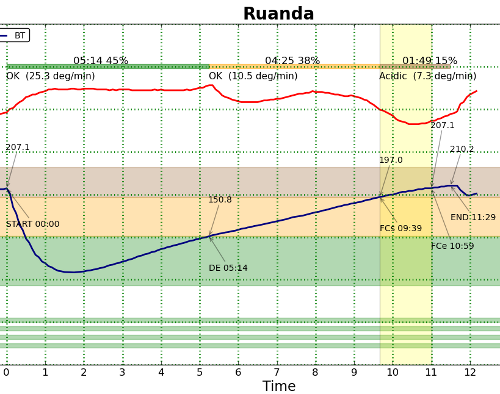
The upper red line is the temperature measured between the outer casing and the drum, so it should approximate the amount of energy being applied from the heating elements. Minus the airflow - it would be really helpful to automate logging of changes to the airflow and heating power, as airflow changes have a direct impact on the measured temperature outside the drum. The blue line is the temperature of the bean mass probe, first crack happened during the yellow marked area. I haven't tasted this specific roast before, but I know that the bean tastes very good.
We also did a little animation, taking a photo through the sightglass ca. every 30 seconds. Watch the slideshow in full-hd here - It's an OGG Theora video, so it should theoretically work with Firefox and Chrome, but probably not in Safari and IE.
The tryer
Oh and have you noticed the tryer? It's so cute! Depending on the bean size, it catches 3-7 beans when you pull it out. I'll probably make a new handle for it, as it's a little thick and brings the fingers dangerously close the very hot exhaust in front of the front plate!
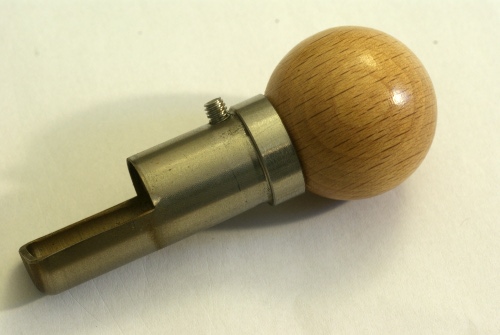
Oh and did I mention the best thing of all? Even though it's batch capacity is somewhere around 200-250g for me, you can roast back-to-back. My longest roast session was 10 roasts in a row, took me a little over two and a half hours and left me quite caffeinated/hyperventilating, as I do not have such a nice exhaust hood as Bruce has. Roasting indoors is fun, but with only the windows open it gets cold and smokey after 2-3 roasts.


